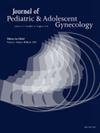Qualitative Assessment of Provider Approaches to Dilation after Vaginoplasty
IF 1.7
4区 医学
Q3 OBSTETRICS & GYNECOLOGY
引用次数: 0
Abstract
Study Objective
Most surgical vaginoplasties are followed postoperatively, when age appropriate, by patient-led dilation to maintain patency, but there is a lack of both standardized protocols and research comparing dilation practices within and across surgical routes. This study's objective was to determine surgeon attitudes about dilation and learn what protocols they use and endorse to take steps toward addressing the literature gap around dilation practices and outcomes.
Methods
We performed semi-structured interviews about dilation practices with 10 providers (9 surgeons, 1 nurse) involved in vaginoplasty at a single tertiary care children's hospital. The interview recordings were transcribed, and thematic analysis was performed using an iterative process of coding, re-coding, and generation of themes.
Results
Three major themes were generated from the analysis. First, interviewees described variable definitions of success regarding dilation after vaginoplasty, describing both patient-centered and anatomically objective outcomes. They also discussed a lack of standardization of techniques, with many echoing confusion or frustration regarding this, both in training and in practice. Finally, they described the ad hoc inclusion of behavioral health as a collaborator for patient dilation education. This was reviewed as something often believed to be necessary to dilation success but not explicitly included in dilation protocols.
Conclusion
This study of clinicians' experiences with dilation after vaginoplasty highlights the diversity of approaches used, the lack of standardization in training, and the gaps in existing research to inform best practices.
阴道成形术后阴道扩张方法的定性评价。
研究目的:大多数阴道成形术术后,在年龄合适的情况下,通过患者主导的扩张来保持通畅,但缺乏标准化的方案和比较手术路线内和手术路线间扩张实践的研究。本研究的目的是确定外科医生对扩张的态度,并了解他们使用和认可的协议,以采取措施解决关于扩张实践和结果的文献差距。方法:我们对一家三级儿童医院从事阴道成形术的10名提供者(9名外科医生,1名护士)进行了半结构化访谈,了解他们的扩张做法。然后对这些录音进行转录,并使用编码、重新编码和生成主题的迭代过程进行主题分析。结果:从分析中生成了三个主要主题。首先,受访者描述了阴道成形术后扩张成功的可变定义,描述了以患者为中心和解剖客观的结果。他们还讨论了缺乏标准化的技术,在训练和实践中,许多人对此感到困惑或沮丧。最后,他们描述了行为健康作为患者扩张教育的合作者的特别纳入。这通常被认为是扩张成功的必要条件,但没有明确包括在扩张方案中。结论:本研究总结了临床医生在阴道成形术后扩张术的经验,强调了使用方法的多样性,培训缺乏标准化,以及现有研究在告知最佳实践方面的差距。
本文章由计算机程序翻译,如有差异,请以英文原文为准。
求助全文
约1分钟内获得全文
求助全文
来源期刊
CiteScore
3.90
自引率
11.10%
发文量
251
审稿时长
57 days
期刊介绍:
Journal of Pediatric and Adolescent Gynecology includes all aspects of clinical and basic science research in pediatric and adolescent gynecology. The Journal draws on expertise from a variety of disciplines including pediatrics, obstetrics and gynecology, reproduction and gynecology, reproductive and pediatric endocrinology, genetics, and molecular biology.
The Journal of Pediatric and Adolescent Gynecology features original studies, review articles, book and literature reviews, letters to the editor, and communications in brief. It is an essential resource for the libraries of OB/GYN specialists, as well as pediatricians and primary care physicians.

 求助内容:
求助内容: 应助结果提醒方式:
应助结果提醒方式:


